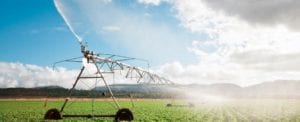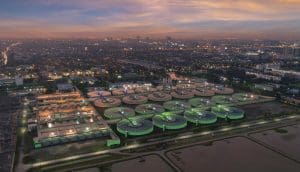
In Maslow’s five-level hierarchy of needs, our most essential needs are the physiological ones—food, water, shelter and rest. A physician might put it more clinically; a human can survive around four days without clean water. Right now, after a largely rain-free spring, summer and autumn, hundreds of thousands of Kiwis are living under water restrictions that illuminate the complexities of our national water services. So, what is the solution to the crisis and where does tech fit in?
1. New tech has changed the game for water, including in big metropolitan areas
According to news reports, Sydney Water is among the public sector bodies setting the standard for the use of technology in large, often aged, infrastructure systems. A UNSW researcher is now undertaking a study using sonar arrays to detect cracked pipes in Sydney’s water system, which is losing around 10% of its daily water to leaks. (This is not unusual—at any given time, around 30% of water is being wasted through leaks in pipes, water collection and distribution infrastructure globally, often due to aging infrastructure). The researcher says the technology components are not expensive and could make for a “potentially very cheap” water main system.
Tech like this and the Internet of Things—a whole smart sector network which includes miniaturized sensors—change the game for water management and crises. It is now possible to incorporate virtual sensors throughout a water network, allowing for real-time management of hydraulic, energy usage and water quality parameters; to detect breaches of pressure, water quality or other factors; to produce alternative what-if scenarios and compare their benefits with BAU scenarios; and much more. More importantly, it allows for predictive and pre-emptive maintenance, which saves money and time and prevents loss of water—making the most of the infrastructure we already have.
We are looking at a huge opportunity without a large capital investment, which, if taken advantage of, can create a long-term, inexpensive, reliable supply of a precious resource.
2. The tried-and-true can support the new tech
Man’s best friend might be coming to the rescue once again—also in Sydney, highly trained dogs are now being trained and deployed to sniff out wastewater leaks and contamination that is so slight even sensors might miss it. Again, this is an affordable investment in public health and infrastructure that targets the problem and doesn’t require digging up metres of pipe in order to find a leak. It is a very intriguing methodology that shows there are many ways to solve the problem of aging infrastructure while causing minimal disruption to economic and social activity in busy cities.
3. Businesses stand to benefit from newly announced water reforms
In early July, the Government announced the long-awaited investment in water reform, with the funding and agenda being championed by the likes of Infrastructure NZ. The Government has committed $761 million in investment to local councils which opt in to the wider water reform program. Infrastructure NZ has made the comparison with Scottish Water, which after undergoing its reform process two decades ago was able to double its capital expenditure and its customer satisfaction, while lowering water rates by 40% over a decade and a half of reform.
There are clearly huge economic advantages to increasing the scale and capacity to plan, fund, finance and operate increasingly complex water systems; and the benefits of significant Government investment can be felt across all regions as businesses can rely on steady, secure, clean supply and there is a correlative improvement to public and environmental health of superior water infrastructure.
4. Water solutions are available on the smallest and largest of scales
To give another example, Yarra Valley Water (YVW), the largest of Melbourne’s three water corporations, providing water supply and sewerage services to over 1.7 million people and over 50,000 businesses, now uses the cutting-edge 30,000-point SCADA system to monitor approximately 550 sites, from treatment plants to water pump stations and sewer relief, pump and flow control facilities. The water network spreads over 4,000 sq km, with population growth meaning the pressure is on to deliver sustainable water solutions.
Schneider Electric modernized the SCADA system to deliver benefits, including the ability to monitor the distributed assets and perform predictive and reactive maintenance, and to be better able to respond to incidents, such as environmental spills, in a timely manner. The system also reduced the maintenance support cost; reduced reported faults by 66% within eight months of going live; reduced external support cost by 80%; and provided other key benefits such as real-time performance and operational reporting and business reporting to streamline the dispatching of work crews and increase efficiency. The combination of increases in performance, safety, maintenance control and reductions in cost is crucial for any taxpayer-funded system on which hundreds of thousands of people and businesses depend.
Another interesting note about the Australian approach to water: across the Tasman, water is allowed to be traded by irrigators—so it has a value as a commodity, and attracts investment. Could a similar approach here encourage better management of water scarcity issues?
5. We can follow the lead of other countries and industries with a real understanding of the value of water
Leading on a world stage for technology adoption is New Zealand Agriculture—the past decade has seen the implementation of water management telemetry systems. Typically, farming communities now have a high degree of awareness of compliance and are more focused on consumption, measurement and efficient use. Many farm managers use SCADAfarm, an industrial cloud software platform developed by WaterForce using Schneider Electric’s EcoStruxure and Microsoft Azure technologies. This helps farmers check and control irrigation over a broad geographical area or multiple farms, often using just a smartphone app. Local government bodies also use this type of technology to manage assets.
Global fresh water demand will increase 55% by 2050, and currently, 70% of all fresh water is used in agriculture. Tools of this type show an appreciation for the value of water and illustrate the potential for more capability in the measurement and control of responsible usage—from fresh to grey water.
6. By all means, use industry wide collaboration!
There is a tonne of expertise among private companies in New Zealand. Collaboration between government and the private sector could be something worth further investigation. The equation in long-term security of water services provision is local government + service providers + tech partners. Companies such as Schneider Electric have energy expertise and a range of water solutions, from Internet of things (IOT) technology, to software and hardware solutions for monitoring and controlling water and wastewater treatment plants, to water networks and desalination plants. Schneider Electric can provide hardware and software solutions to enable these solutions along with R&D and other core functions.
7. We have the capability to measure efficiency across the board
The only true barrier we have is mindset. We need to move away from traditional, slower-moving approach to water (a ‘man in a van’ coming to fix the tap) and towards a sophisticated digital approach (the IP of NZ Inc) which helps us conserve precious resources, measure everything we are doing and take the risk out of water services provision. By deploying digital technology and cutting-edge hardware, we can equip New Zealand’s various water authorities with enhanced tools that are ready to meet the present and future challenges of water planning, provision and management.



